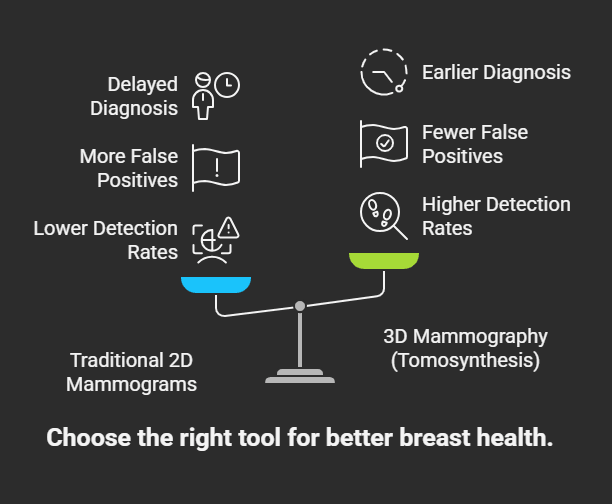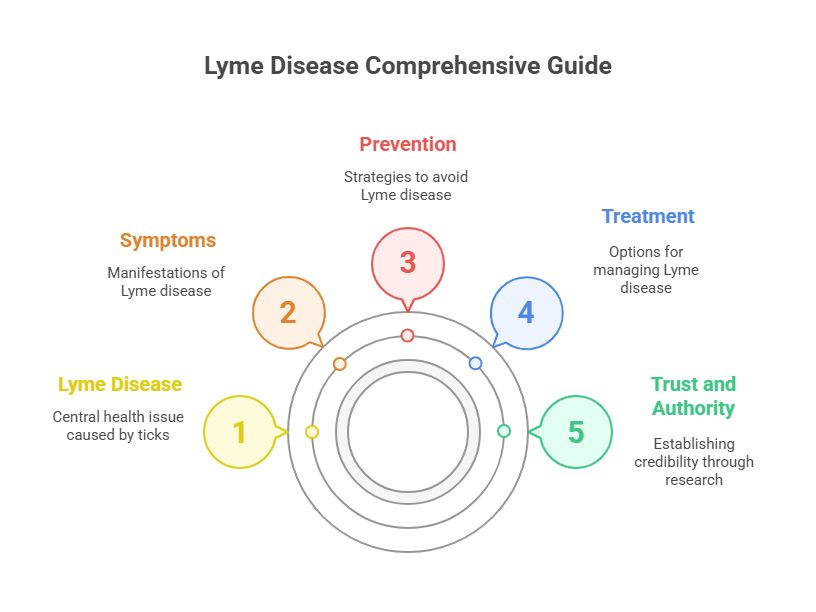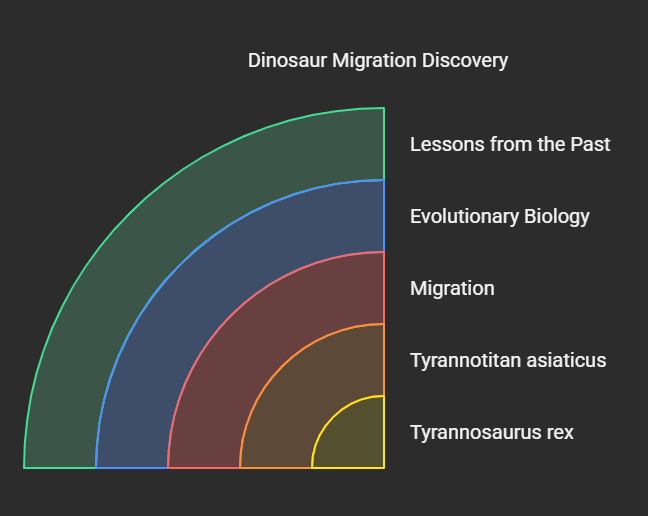A Life-Saving Discovery in Dense Breasts
My story and an important health discovery are featured in this introduction. My best friend, Sarah, got the results of her most recent mammogram two years ago — and they weren’t clear. She was not yet 45, in good health and taken no strong medications, with no sign of breast cancer in her family. However, since she had dense breast tissue, normal mammograms weren’t effective at finding unusual changes. Only when she had a different mammogram did the doctor find early warning signs of cancer which were easy to miss if a different kind of scan had been used.
Sarah’s s situation isn’t an unusual one. The American College of Radiology says that about 40–50% of women have very dense breast tissue. Should you belong to that group, it could, in fact, save your life to discover which mammogram is better.
I’ll clarify in this post why having 3D mammography (tomosynthesis) is superior for women who have dense breasts. We’ll cover what dense breast tissue is, how it affects the chances of breast cancer being detected and why better imaging methods are now helping find cancer early on. From my experience as a web writer and interviewing radiologists and oncologists, I understand how important knowledge is when it comes to women’s health. We’ll look at science, stories and the most important solutions.
Understanding Dense Breast Tissue: What It Is and Why It Matters
Before we get into the types of mammograms, let’s break down what “dense breast tissue” really means.
What Is Dense Breast Tissue?
Breast density means how much of your breasts is made up of fibrous and glandular tissue versus how much is fat. Dense breast tissue appears white on a mammogram, just the same as tumors or masses. That creates problems in identifying any potential issues.
People’s breasts are generally classified into one of four types of density.
Mostly fat
Found in some locations of fibroglandular tissue
Heterogeneously dense
Extremely dense
Dense breasts make it harder for mammograms to work well in these two groups and also modestly raise the chance for breast cancer.
How Common Is Dense Breast Tissue?
- One in ten women under 50 have extremely dense breasts.
- Only about one in four women become stateless when they reach their 50s.
- About half of all women have heterogeneously or extremely dense breasts, according to imaging studies.
If you’re concerned about this, you likely meet the criteria, especially if you’re premenopausal or on hormone therapy.
Differences between 3D and traditional mammograms: what you should know.
Now that we see how hard it is to examine dense tissue, we should study how we screen for breast cancer.Traditional, flat, mammograms For decades, this has been the method doctors use for screening. It means the breast is held in a device that presses it between plates, after which you get two X-ray views from different sides.
Many women who have fatty breast tissue find that 2D mammograms can be highly effective, but these images can be less reliable for other women with dense breasts.
Because there are layers in the breast, some areas might cast shadows that can make it hard to spot little tumors. Doctors may need further imaging test to have more certain results. Testing for cancer is less effective in people with dense breasts.
The Introduction of 3D Mammography (Tomosynthesis)
3D mammography which is the same as DBT (digital breast tomosynthesis), is not the same. Rather than forming a two-dimensional picture of the breast, it takes several thin slices that reveal unique details and fuses them into a 3D image.
This is why it helps:
By thinning the captured tissue, radiologists can gain a clearer view past the dense parts of a breast.
According to JAMA Oncology, up to 40% more cancers might be picked up sooner. Decreases the possibility of getting too many callbacks for testing over issues that are not true positives.
3D mammography allows us to detect breast cancer sooner and reduces the number of unnecessary biopsies, according to breast radiologist Dr. Regina Hooley.

The Reasons Why Dense Breasts Should Use 3D Mammograms According to the Research
Let’s examine the research and the changes seen in practice as a result of 3D mammography. Improvement in How Frequently Cancers Are Found Radiology published research showing that performing 3D mammography along with 2D exams helped find 29% more invasive cancers on a population basis and this rate goes up to almost 50% among women with dense breasts.
A smaller number of False Positives
Another big advantage is a decrease in false alarms. In one study, using both 2D and 3D imaging helped reduce callbacks by 15%, so breast patients worried less and less re-testing was needed. The sooner a disease is detected, the higher the chance of a recovery. Thanks to 3D mammography finding minor, early cancers, patients choose from several treatment plans and can expect better outcomes. As Chief of Breast Imaging at Penn Medicine, Dr. Emily Conant explains this. “Many cancers are detected early, when they are simpler to handle.” That’s the value of having better images.
Such stories are growing in number in real life.
After Sarah’s standard mammogram couldn’t confirm the cause of her discomfort, she needed to undergo a 3D mammogram and ultrasound. A 3D scan picked up a small mass that we hadn’t seen clearly before. It was stage 0 ductal carcinoma in situ (DCIS) and she had a lumpectomy with no problems after that. Based on the doctors’ assessments, the problem wouldn’t have been spotted for another year if the 3D technology wasn’t used. As more women are found to have dense breasts, many health centers now recommend adding 3D mammograms during routine screenings for these patients.
Useful Advice for Women Facing Breast Density
If you’ve been informed of dense breasts, these suggestions will help you right away: Tell your doctor you would like a 3D Mammogram. While scheduling your upcoming mammogram, ask for a 3D version. It’s widely available in many places now, but make sure to ask about it.
Make Sure You Know What Your Rights Are
Women in over 38 states are now supposed to be informed if a mammogram shows their breasts are dense. If you read your mammogram report, see if it addresses breast density — and ask about it if it isn’t mentioned. You should also look into other forms of screening. Women with very dense breasts or other risky conditions could be advised by your doctor to receive:
Breast ultrasound MRI scans The technique known as molecular breast imaging (MBI) Using these types of tools can support mammography and improve how many problems are discovered. Make sure to learn about your situation and talk about it whenever needed. Knowing something gives you strength. Explain any risks you know about and discuss your family history with your doctor to decide which screening is right for you.
In brief: Finding Problems Early Depends on the Right Equipment
Women all over the world are more likely to get breast cancer than any other type — and finding it early gives us our best chance. With 3D mammography, women who have dense breast tissue experience clearer images, greater accuracy and greater confidence. This isn’t only an improvement — it can transform things. A mammogram is important, but don’t expect every screening to be identical. Don’t hesitate to ask questions, check your breast density and urge your them to give you the best care they can. Keeping yourself healthy is really important.
Hungry for more? check our website for more facts






